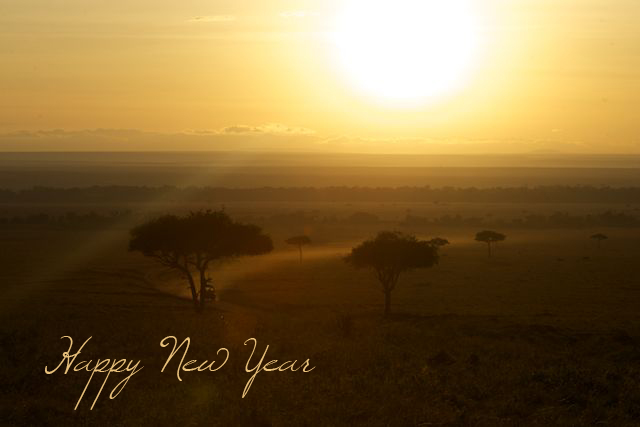The Rise of Fine Art Photography
31/01/13 08:49 Filed in: Photography & Art
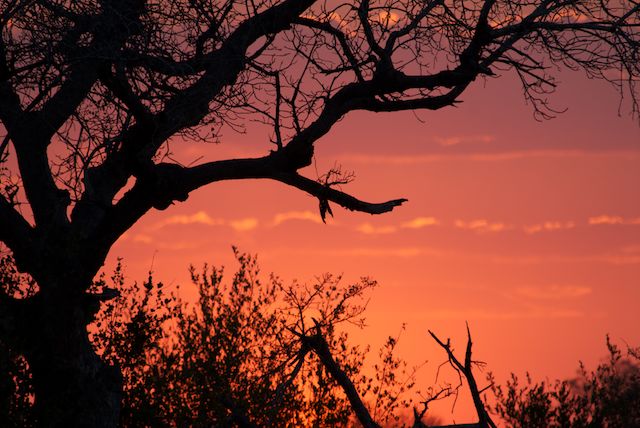
“Great art is great art, whatever the medium.” said Arthur Goldberg, a major US collector of contemporary photography for the last 40 years. (via Forbes)
Some of the fine art photography “top on the list” are Andreas Gursky, Richard Avedon, Irvin Penn, Helmut Newton and Cindy Sherman. The markets are willing to pay lots of money for their art and this is only good. These artists are stimulating young and emerging photographers to follow their example and do what they love to do, photography.
With or without photography study or courses, one can be successful and be a great artist. Intuition is the main resource of creativity and one simply got to trust it. Well, that trusting might be the difficult part when bills are piling up and the rent is due too, yet it’s the way it goes. Helmut Newton was struggling until his early 40ies. Going to Paris made all the difference for him and his career took off. Often it is patience and trust in the passion that bring success.
Keep going and enjoying what you do. Immerse in the love for photography.
Ute Sonnenberg for www.rohoyachui.com
Self-Published Photo Book Library - The Indie Library
30/01/13 09:46 Filed in: Photography & Art

Larissa Leclair started The Indie Photobook Library in Washington D.C., giving a home to rare self-published photo books hoping that the collection will be preserved for future generations to see what great work photographers did, although they might not have been officially acknowledged by publishing houses.
The books in this library are physical books and its great that there is a place to keep them safe for the future, but what about the ephoto books? Wouldn’t it be great to have an ephoto book library instead of ephoto books scattered over the internet with several online publishing platforms? How would it be to have an online library of online ephoto books accessible for anyone from the photography lover to photography teachers available as “text books” during photography lessons?
Imagine photographing during travel, lets say in France or on photographic safari in Africa or on a cultural trip to Asia and uploading right away your on the go ephoto book to the online library and also to find inspiration and tips while creating your photo book from the online library. It could be some kind of itunes “store” for ephoto books, but then free access.
Inspired? Someone should do it and make the photography community happy.
Ute Sonnenberg for www.rohoyachui.com
Photography & Business: The Unconscious has the Lead
29/01/13 10:28 Filed in: Insights & Opinion | B2B

Have you ever had a conversation with your gut feeling? Did you listen? What did happen then? Where you one of those who said, I knew this would happen, but didn’t do anything beforehand with this knowledge?
If your answer is yes, you are one of those who know and don’t do anything with it beforehand, be assured you are not alone. There are whole industries built on doubting the gut feeling or better the not listening to intuition. For example market research. Endless tests with focus groups to find out what new products customers want. But how can customers know they want the new product when the product does not even exist as an idea? Steve Jobs did the only right thing. He made the iPod without any market research, just by following his intuition and no doubt, it was a success. Now, one might think, but there are not so many Steve Jobs. Yes there are, they only need to be encouraged and trained to discover and utilize their intuition, because we all got intuition.
Nobody seems to find it weird to act intuitive in photography, choosing the right photography course and the right photo safari by following their feeling, knowing intuitively what is the right course to do and the right destination to visit. Photography is constantly working with intuition, having the finger on the camera’s shutter to press it when the moment to capture occurs. And the results are photos we love.
In other words creative people like photographers run on intuition, now this ability only needs to be applied to business and science, although scientists are very conscious about the role of intuition as Freud and Einstein say themselves:
Sigmund Freud: “Everywhere I go I find a poet has been there before me. Poets are masters of us ordinary men, in knowledge of the mind, because they drink at streams which we have not yet made accessible to science.”
Albert Einstein: “The intuitive mind is a sacred gift and the rational mind is a faithful servant. We have created a society that honors the servant and has forgotten the gift.”
So, lets focus on intuition and the knowledge of the unconscious, visualize it through photography and for whatever answers you were looking for in your business, you will unearth them with a click on the shutter.
Tap into your intuition consciously and access immense resources of knowledge.
Ute Sonnenberg for www.rohoyachui.com
Oscar Niemeyer - Inspired by Nature
28/01/13 19:54 Filed in: Photography & Art
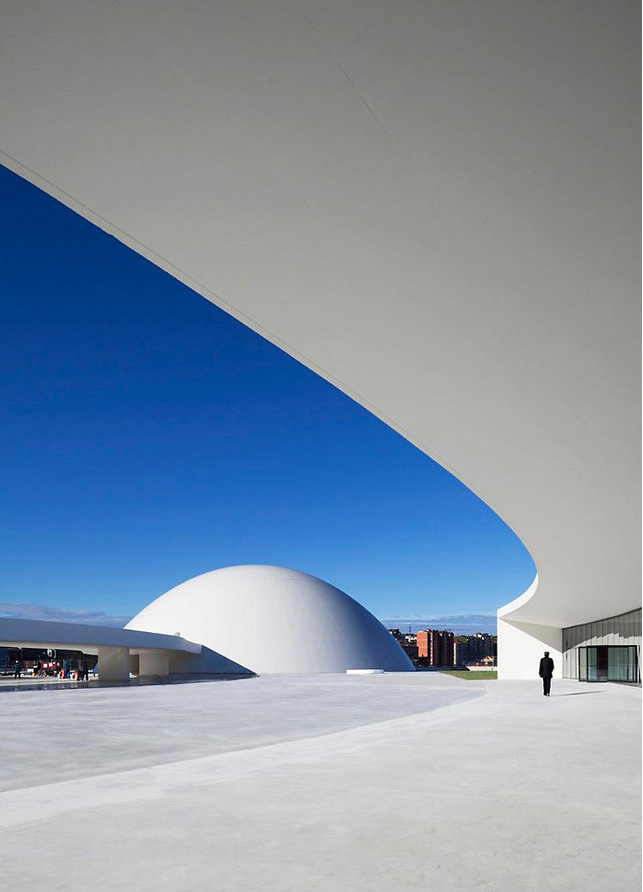
Oscar Niemeyer, Brasilia’s famous architect and co-creator of the city Brasilia, is well known for his creations made of concrete. In the case of Brasilia I find it personally a bit too much of his design in one place, a bit too much concrete, but nonetheless one can see clearly that Niemeyer was inspired by nature when creating his abstract formed buildings.
He wrote in his memoirs:
“I am not attracted to straight angles or to the straight line, hard and inflexible, created by man. I am attracted to free-flowing, sensual curves. The curves that I find in the mountains of my country, in the sinuousness of its rivers, in the waves of the ocean, and on the body of the beloved woman. Curves make up the entire Universe, the curved Universe of Einstein.”
One could say he created concrete art inspired by nature and concrete was an ideal medium to mold pieces of modern architecture.
For those of us who love photographing architecture, his work is a great subject and also a challenging one, making good examples for photography courses. How to photograph this modern architecture? What is the right angle to capture the spirit of it and not to distort the design? Probably by capturing the spirit of nature he put into it, focusing of dynamic parts of the buildings and one would actually capture the essence of his work.
Well, architecture photographers, take on the challenge and be inspired by a great man.
Ute Sonnenberg for www.rohoyachui.com
Image via Co.Design article on Oscar Niemeyer, read here.
ePhoto Book: App Art
27/01/13 19:48 Filed in: Photography & Art

Photography has become something for every day with the cell phone camera always with us, and a variety of photo apps at hand. The great filters of the photo apps give a boost to creativity and allow easy playing with artistic photography. No photography course needed, only the creative flow and there you are, creating art on the go.
App Art is a selection of app images, even from a wildlife sanctuary in Nairobi. View and download here.
Happy snapping!
Ute Sonnenberg for www.rohoyachui.com
On Photo Safari: Auto Display
26/01/13 19:47 Filed in: Photo Tips

Have there ever been moments that you were annoyed by the display of your camera, because you couldn’t see anything, especially when it’ sunny?
After photographing we like to look at the display of the camera to see what we did. Well, we know from our photography courses that the display is not the best quality to see the image, but still it should give a good impression of the result.
On one of the photographic safaris one of the guests had a Nikon D800E and he was very angry that he couldn’t see what he did, because the display looked just useless. After playing around in the menu we found that the camera was not to blame, it had an Auto Display feature, meaning that it adjusts the brightness of the screen to the light situation automatically. It turned out that this feature is very useful and works perfectly. The Auto Display feature turned an angry photographer into a very happy photographer.
Check first what your camera can do for you before you get angry at it!
Ute Sonnenberg for www.rohoyachui.com
Photography and the Money
25/01/13 07:58 Filed in: Photography & Art
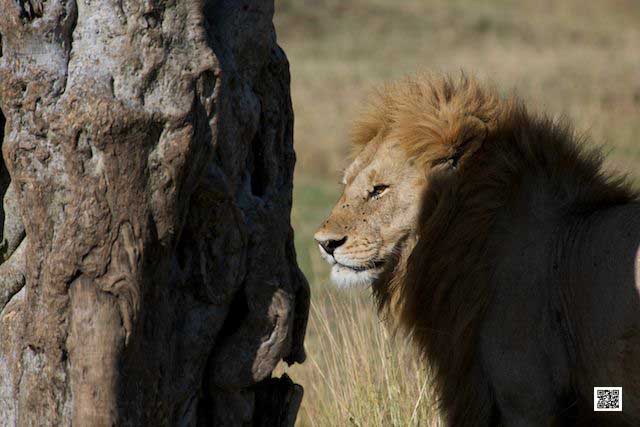
Collectors are usually careful or even skeptical with regards to fine art photography. A photograph might be reprinted in the future and the investment would be lost. But confidence is growing and experts think that the modern and contemporary photography art market will grow. Within the last year, new heights in fine art photography auctions were achieved and high prices were paid.
What does that mean? With photography now being an everyday part of life for billions of people around the globe its fine art is also more recognized and valuable for collectors. And photography itself has become big business through the cell phone market and camera equipment and it will be even bigger in the future. Photography is the future and that reflects in the art market as well with rising prices for fine art photography.
But how will photographers benefit from that? This is hard to say. Maybe a comparison from hospitality business can shed a bit light on that. Imagine you have a bar in a street where no other bar is. You think that’s great, because there is no competition, but that means also that the customers need to come especially to this street to visit your bar. How many people will do that? Some, but not many. Imagine you have a bar in a street where many other bars are. You might think that’s tough, because there is lots of competition, but it is the opposite. People know that there are many bars in the street and they have a choice, they can move around between bars the whole night if they want and that makes them come to this street. And where many customers are there is a chance that they will visit your bar too. The same works in photography. Many photographers make lots of photography and lots of photography makes lots of people interested in photography and the chances that people love your photography is higher than in times that only few people were doing photography.
Confused? Don’t think too much about it, just enjoy photography and follow your passion. The rest will come.
Ute Sonnenberg for www.rohoyachui.com
Camera Oscura - Old Masters and Photographers
24/01/13 08:47 Filed in: Photography & Art
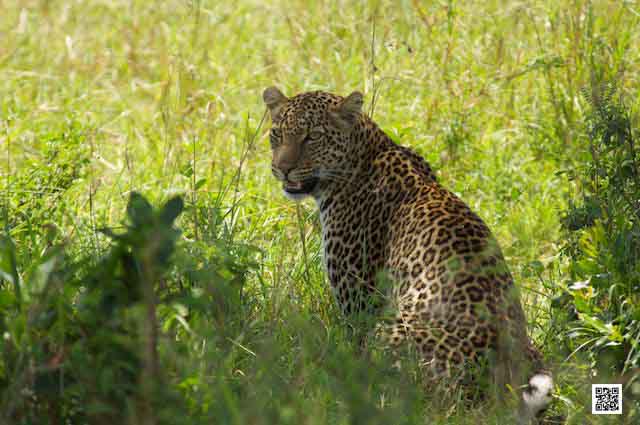
“The camera obscura is an optical device that projects an image of its surroundings on a screen.” (via Wikipedia)
It is thought that old masters like the Dutch painter Johannes Vermeer used it to create their paintings. British artist and art historian David Hockney did intensive research on the subject and concludes that the great masterpieces were created with the help of optics and lenses. (read the article on PetaPixel)
Knowing this doesn’t make their work less amazing. One can use optics and lenses and still doesn’t know anything about composition and light. One needs to be able to see first and that explains even more why a photographer can learn composition from looking at their masterpieces. They used photography tools the same way photographers are creating their compositions nowadays. So, going to a museum and looking at the old masters is a great photography lesson. Do the Louvre and you have a whole photography course, add a photographic safari and an intensive course in natural light will finish it up. And as a result your photographs are paintings with light, maybe even masterpieces of light and composition. You actually learned from old masters.
Surprising? Check it out. You can also visit the Louvre online. Here the link: Louvre.
Ute Sonnenberg for www.rohoyachui.com
What is Success in Photography?
23/01/13 08:06 Filed in: Photography & Art

“As a self-taught filmmaker who spent the last year trying to get his first real project up and running , I've come across my fair share of disappointments, near misses, and financially tight times. As with any startup or personal project, finances are scarce and it's often your passion for the project and support from family and friends that carries it through. For all entrepreneurs (especially those on the artistic side, like me), creating something of your own isn't about making money--it's about being successful in the way that you personally define it.” (from article by Kerrin Sheldon)
Kerrin Sheldon’s definition of success is doing something that you love. In his case its filmmaking and it applies just as well to many photographers. Some are self-taught photographers, others did several photography courses or studied photography, yet it’s the passion and love for photography that connects them. They succeed in doing what they love to do and that makes them happy.
And isn’t happiness what we are looking for in life? Well, maybe a new camera or two contributes to happiness too, but the love and passion are the real fun.
Happy snapping!
Ute Sonnenberg for www.rohoyachui.com
A Story of Disruptive Innovation and Photography
22/01/13 16:59 Filed in: Insights & Opinion | Photography & Art
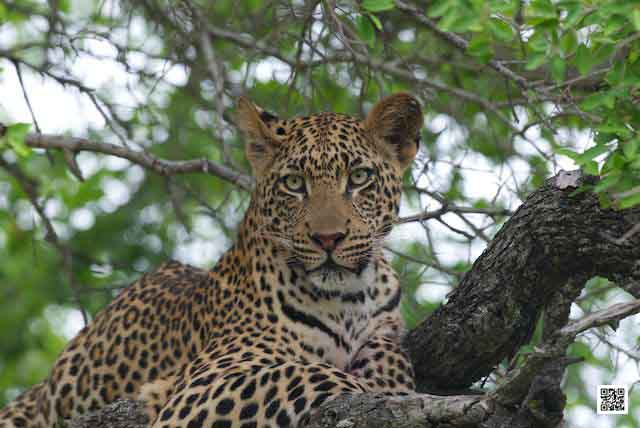
Good ideas often come while we are doing something very boring like driving on the freeway, washing the dishes, doing ironing or other monotone work. We get in some kind of a trance and our thoughts start wandering away and sometimes to places where ideas wait to be discovered. Our mind gets somehow switched off and the intuitive level takes over. In other words our usual thoughts are put to sleep.
Now we got this amazing idea, we quickly finish the dishes and go straight behind the computer to work the whole thing out for implementation into practice. Lets say the idea is a new kind of team building that uses photography to align the energies of the individual team members in order to accomplish the team goals. This might sound complicated, but it is not, its only photography and it will feel like a normal photography course, only the results will be more beneficial for the team. Lets call it an innovative application of photography for business.
How do others experience this innovation? Some will see immediately the fun of photography and will be curious to discover new exciting things. Others might be skeptical and might feel a bit uncomfortable, not knowing how the whole thing will work. For them it might feel disruptive, different from the usual team building they always had and reluctance might creep up, tempted to reject the innovative approach of the team building.
What will win, the reluctance or even rejection or the curiosity, fun and excitement? This is the moment when leadership is needed. At the end the leader guides the team to new success and sometimes something has to disrupt the routine to achieve new levels of achievements.
Another example: Who remembers the Reebok Pump? Here what happened when the innovation was introduced to the responsible people:
“When Continuum pitched an idea to Reebok for a new basketball shoe that would use inflated air to better support the ankle, thereby reducing injuries, the brand manager for basketball shoes said he wasn’t interested because he had never heard about a need for that from a focus group. When we proposed the idea to a high school basketball team, the response was even worse--the players openly laughed at the concept.
But when the team members actually used an early “experiential model” of the shoe during practice, they were won over by how cool it was to have a shoe form-fitted to their feet. Over time, they were even more enthusiastic as they realized they could play more confidently without fear of injury. Like that, the Reebok Pump was born.” (via Co.Create, read the article here)
The Reebok Pump could be called a disruptive innovation. It obviously disrupted the usual thinking and doing, yet when eventually tested all were happy.
There are plenty of examples like the Reebok Pump, also in art and photography. People disliked the painting style of Van Gogh. It was different from the style of other successful painters at this time and Van Gogh’s style might have been experienced as disruptive.
Long story short, disruptive innovation is something revolutionary and photography is a wonderful medium for innovation, within photography and beyond. Use it and be not discouraged when some people might feel disturbed. You might be a new Van Gogh or Rembrandt!
Keep snapping!
Ute Sonnenberg for www.rohoyachui.com
How to Learn from Sting
21/01/13 15:17 Filed in: Photography & Art

How do you create albums and photo books? How do you choose an image from a whole lot of photographs? How do you choose a photography course or art class out of the broad spectrum of choices? How do you choose your travel destination for your holiday?
I might sound far fetched to through together photo books, albums, photographs, holidays and photo courses, but they got one thing in common, the question how you start creating or making a choice. It is in essence the same intuitive process no matter if you are creating a photo book, a holiday, choosing a course or a photographic safari, your intuition makes the choice and takes the lead. And this creative process often includes a technique called semantic intuition, a brain storm technique.
Sting said in an interview that the song title comes first and then he writes the song and so do more famous writers as you can read below:
“The oddly named, but extraordinarily powerful technique was invented by Helmut Schlicksupp, an employee of the Battelle Corporation’s office in Germany. Semantic intuition is a word-combination technique where brainstormers name an idea first, and then try to figure out what the new idea might be, given its name. As counterintuitive or even as impossible as this group idea-generating strategy might sound, there’s actually a precedent for it in the creative arts.
It was in an interview with Larry King many years ago that Sting revealed that he will often get a title for a song first, and then he will go ahead and write the song. Neil Simon, in his second autobiography, revealed that he came up with the name for the play The Odd Couple first, and then wrote the play. And legendary screenwriter William Goldman adopted a similar name-it-first creative strategy when he asked his younger daughter what she wanted him to write a story about. She said “a Princess.” Then he asked his older daughter what she would like him to write a story about. She said, “a bride.” He put them together, and we got his novel--and then the movie--The Princess Bride.”
(read full article from Fast Company here)
Does that sound familiar to you? Don’t you have an idea for a photo book first and maybe even the title and then you start choosing the images and layout?
Think about it. Maybe you are very strong in semantic intuition. Use your strength and create amazing art.
Enjoy your intuition!
Ute Sonnenberg for www.rohoyachui.com
ePhoto Book: Contrast - The Light of Darkness
20/01/13 09:48 Filed in: Photography & Art

Photographic safaris bring you to the most beautiful wildlife destinations in Africa. Their beauty is striking and they teach the visitors not only about wildlife and nature, they also teach about light and contrast and sometimes light and contrast are mirrored in what the bush and the animals are experiencing through life and death.
Contrast makes us see and is what makes a photograph striking.
View & download the ephoto book here.
Ute Sonnenberg for www.rohoyachui.com
On Photo Safari: Auto ISO
19/01/13 08:39 Filed in: Photo Safari

From the point and shoot cameras to the professional digital cameras, all have the feature “Auto ISO” and although one might have learned during a photography course how to use the manual ISO settings, one often goes just back to use Auto ISO. It’s just convenient.
And it might work in most of the situations, but not as well when being on a photographic safari. Photographing in the bush is different and the auto settings often fail to match the light conditions there. The Auto ISO often goes too high and the images look washed out. Use in normal bush bright daylight ISO 100 and you will be fine. But keep looking at the light and adjust the ISO manually when the light gets lower. You will see the results are much better. Depending on what manual setting you prefer, rather leave the ISO at 100 and play with the aperture.
Happy playing!
Ute Sonnenberg for www.rohoyachui.com
How to Communicate through Images
18/01/13 07:30 Filed in: Insights & Opinion
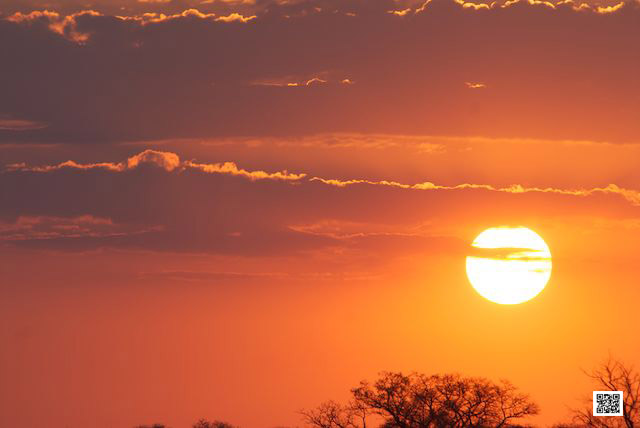
A picture says more than a thousand words. Nothing is truer. Do you know how your granddaughter looks like when her mother tells you or do you rather want a photo of her? But what more is in the picture than her curly hair and her pretty face?
When you look at photographs, you can feel immediately the moment that was captured. Have a look at holiday photos, you on the game vehicle during a photographic safari or you swimming in the ocean or you and your family in the garden at home. You are back in that moment and you can tell immediately everything what happened at that moment, because photography captures a moment in all its dimensions.
This is great to experience holidays again and other memorable moments in life, but it is also very useful for everyday communication and even business communication and success. An image carries all sorts of information and one can utilize that for “noiseless” communication. Nothing is added or removed, the moment is captured or the information one wants to provide or the idea one wants to share. The image carries it, accessible to anyone at any time.
And the image tells even more than the eye first sees. Also the emotional dimension and intuitional dimension are captured and carried by the image. For what would one need that when showing a photo of a granddaughter? Grandmother would feel immediately if the child was happy or not, although it might show a smile, she would feel. And what works with the granddaughter works for all communication through images, for a decision to buy a house or to manufacture new shoes or to acquire a company. All information for decisions is in the image, one needs only to read it.
And here comes the most interesting part. We always read all dimensions of an image, like the grandmother the mood of her granddaughter, but we do that mostly unconsciously. In order to use photography for communication, we only need to do it consciously and we have an everyday practical and easy tool of visual communication.
Ute Sonnenberg for www.rohoyachui.com
Visit also Intuition Training, using communication through images.
Take an External Perspective for Better Insight
17/01/13 08:23 Filed in: Insights & Opinion
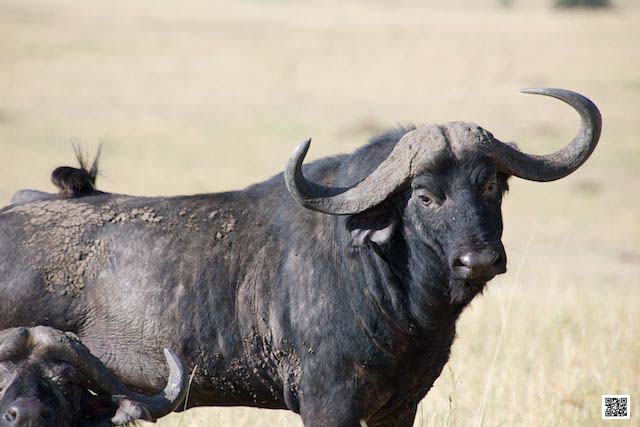
When you visit a museum, where do you stand to look at a painting? Do you stand right in front of the wall, your nose almost touching it or do you stand looking from a distance? Well, if you want to see exactly every brush stroke, you got to come close, but when you want to see the entire masterpiece, you got to watch from a distance.
Talking about an accident is easier when you were witnessing it rather than being involved yourself. You might become emotional while talking when you are one of the victims.
These are two everyday life examples, that having a distance allows a better view on things in their complexity. One can “walk” around a problem or case and see all its aspects from different angles, which result in deeper insights. Innovative leaders will practice that method and photographers do that as well, constantly.
Pretty much every camera has a zoom and if not in the camera, the photographer has most likely a zoom lens. And what are they doing? Zooming in and out constantly to capture the subject the way they experience it, some more closely, others more from a distance. A photographer has always an external perspective and that makes it possible that they can photograph scenes one can hardly look at. Like being a victim of an accident or witnessing an accident, being a witness gives the distance and the insights.
Ute Sonnenberg for www.rohoyachui.com
Photography for Thought Leaders
16/01/13 07:49 Filed in: Insights & Opinion | Photography & Art

Thought leaders are the men and women who guide whole nations and economies into the future, only think of Steve Jobs and his visionary spirit. There is a common sense that visual content, visualizations and pretty much everything will have a virtual existence in the future and that can only mean that photography will play a major role also for thought leaders. How are they communicating in a visual age? Most likely through images and even being not a thought leader one takes rather a photo of a house than trying to explain the husband which house could be a possible home and why. Thought leaders will communicate with their teams through images, team buildings will use photography to align the team members and successful leadership will be measured on how good a leader can communicate with visual content and visualize goals.
Well, none of the leaders needs to be a photographer to be able to communicate through photography, a cell phone is enough, yet there might come a big increase of hobby photographers out of it as well. And that would be great. Photography is just magic.
Ute Sonnenberg for www.rohoyachui.com
Dont' Fear Failure, fear Fear Itself
15/01/13 11:47 Filed in: Insights & Opinion

What do you think about yourself as photographer? How do you feel when others look at your photographs? Probably you feel insecure and afraid that they might not like your photos. Maybe you think during a photo assignment constantly “I hope they will like it” and in photography courses you dare not to ask a question. Sound familiar?
If your answer is yes, you will also know how the results look like when you were afraid of failure during a photo shoot. Most likely you were not happy with them. Maybe your camera was shaking and the subject was not in focus. And for wildlife enthusiasts a lot of other fears can come on top of the fear of failure during a photographic safari, like the fear of the camera getting to dirty, the fear of getting lost or of being run over by elephant. Seems that there are many things in photography one can be afraid of. But the one thing one really needs to be afraid of is the fear itself.
Being afraid makes a photographer being less engaged with the light and subject and even worse, the fear will show in the images.
Be conscious that not everybody will love your photographs, but that doesn’t mean they are a failure, they just do not appeal to them for individual reasons. And there are no stupid questions. So, just ask what you want to ask in any photography course. Learn from other photographers, but do not compare yourself with their awards and magazine cover success. You are going your own way in photography and who had thought that Van Gogh would be world famous now at the time he lived? Maybe just time is not ready for you, but you are ready to enjoy your photography and keep doing that and be not afraid, there is no failure.
Happy snapping!
Ute Sonnenberg for www.rohoyachui.com
Picasso: Painting by Heart
14/01/13 08:55 Filed in: Photography & Art
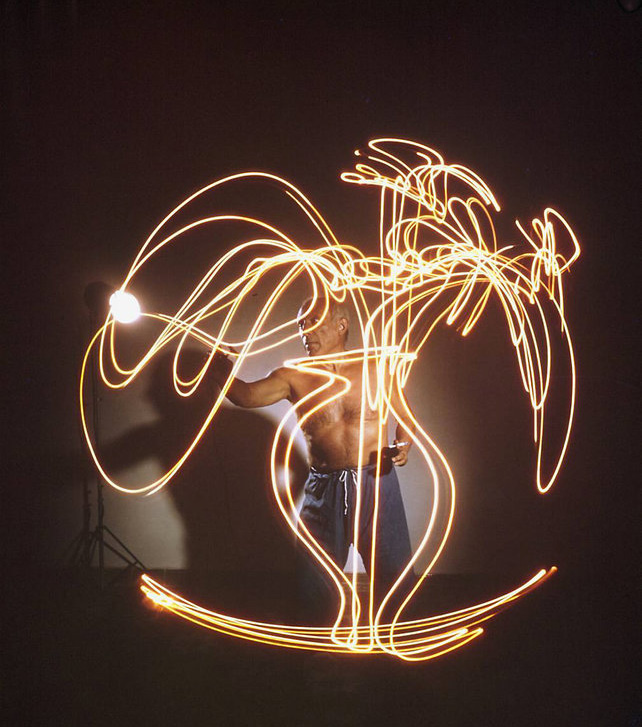
Light painting has become a very popular kind of photography nowadays and there might be even photography courses in light painting to learn the technique. Only as a side note, photography itself is painting with light, but we understand as light painting now, that somebody holds a light source and paints with it while a camera captures the process.
It turns out that light painting is not new. Picasso did it already in 1949. The Albanian photographer Gjon Mili introduced him to it and Picasso was thrilled. Read here what Mili and Picasse created for Life magazine:
“So Picasso did his thing, in various darkened rooms of his studio. He drew a centaur, the figure of a woman, an elephant, and various faces using a small pen light. “He was so fascinated by the result that he posed for five sessions,” wrote Life magazine, for whom Mili was freelancing at the time. “Mili took his photographs in a darkened room, using two cameras, one for side view, another for front view. By leaving the shutters open, he caught the light streaks swirling through space.” The resulting images were published in a 1949 issue of Life, recently resurfacing after the magazine published about the archived images.”
(read the complete article from Co.Design here)
There are other images showing Picasso creating paintings with one stroke and they are already impressing, but this is just stunning. Be aware he doesn’t see what he is painting, at least not with his eyes. If there is any proof necessary, this shows clearly that painting was in his heart.
Wanna try yourself? Paint with your heart!
Ute Sonnenberg for www.rohoyachui.com
eBook: How to's Wildlife Photography
13/01/13 23:39 Filed in: Photo Safari | Photo Tips
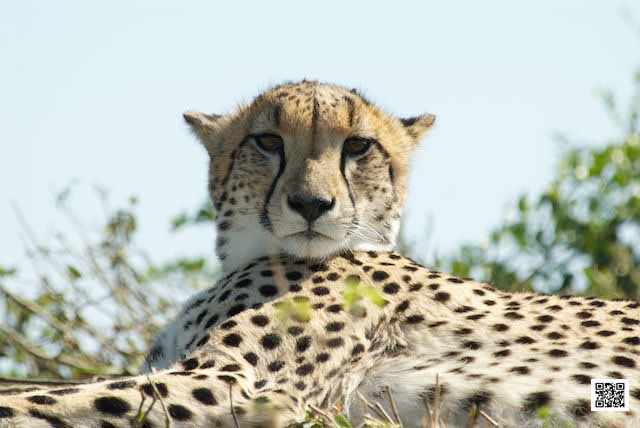
Throughout this blog, posts are scattered with wildlife photography subjects, yet not in a very handy way for the reader to pick them together to read easily.
For those who would like to have them all easy to read in one place, here is the ebook How to’s Wildlife Photography with a selection of blog posts on the subject.
View and download the ebook here.
Happy reading.
Ute Sonnenberg for www.rohoyachui.com
On Photo Safari: The 3D-Tracking Autofocus Challenge
12/01/13 12:56 Filed in: Photo Safari

Wildlife photography is different and the last wildlife photography course in the Northern Kruger Park in South Africa made that clear once again.
Wildlife photography demands a lot of efforts from the photographer. Not only the environment is demanding, also the photographic subjects and the light. Some features of a camera that were included in high end devises do not work in the bush. They are mainly made for other purposes and one needs to be conscious about that.
For example the 3D-tracking autofocus setting, tested during the mentioned photography course in Kruger Park on a Nikon D800E. The focus picks up the wrong things, does not recognize the head/face of an animal and gets confused with the light. The photographer has to chose the focus point, otherwise what he wants in focus is not in focus. So, be careful where you use what autofocus setting and be conscious that the photographer got to do efforts to get it like he/she wants it.
Practice the different settings when you have time to play and not when you want it to work. That will make you happier with the results.
Happy snapping!
Ute Sonnenberg for www.rohoyachui.com
Photography: Aspiration vs. Inspiration?
11/01/13 19:59 Filed in: Photography & Art

What are your resolutions for this year? Do more sports, eat less and healthier and spend more time with family and friends? What are your resolutions for this year regards photography? Do photography courses, travel to photograph more of the world, get a new camera, make more photo books or learn how to photograph at night?
What came first, aspiration or inspiration? Did you cherish the hope of becoming a visual artist and you happened to have a camera at home or were you inspired to capture moments and you developed the hope of winning an award?
Does it matter? As long as you enjoy photographing, you will be inspired to achieve great things in life, in arts and elsewhere. Take your camera and snap what you see, share it and enjoy the captured moments forever.
Be inspired to achieve what you wish to achieve.
Ute Sonnenberg for www.rohoyachui.com
How to Do What You Love
10/01/13 16:39 Filed in: Photography & Art

Photography is probably one of those things one dreams of doing for a living, but struggling to find a way to do it. But how does one know what one loves and wants to do and if this thing is really photography?
This is most likely the most difficult part of it, finding out what you really love and want to do in your life. Photography is often thought to be the most desirable thing to do, but is that really the case? Maybe one would be completely happy by repairing cars or teaching children or being a farmer. But how to know when being completely suffocated by the daily routine of a not loved job one does to pay the bills? Photography seems to be the escape and the desired job, far away from dull routines. It might be for some people, but some people might just love teaching, but don’t know yet. In any case photography is the escape for the dulled mind and the craving heart. Photography can be the tool to find out what you really love to do and can help you to find a way of doing it.
Your photographs tell what your heart knows and your mind fails to see. Look at them, make albums, photo books, calendars, presents and whatever you can think of making from photographs and a pattern will rise and show you what you love in life. And then, just do it. Your life will be most likely happier and if photography is not your dream job, it can still be your beloved hobby.
Happy snapping and life loving.
Ute Sonnenberg for www.rohoyachui.com
P.S. Guidance for this kind of processes is available.
How NOT to Clean Your Camera Lenses
09/01/13 19:06 Filed in: Photography & Art

Isn’t it sometimes tempting just to breathe on your camera lenses and wipe it with a tissue to get some disturbing stains off? Done that? Don’t do that anymore.
Nikon’s support website answers the question “How do I clean the camera lens?” that way:
“The best way to clean a lens is to use a piece of lint free lens cleaning tissue and a small amount of Lens Cleaning solution. Do not use anything containing abrasives or solvents, only use Lens Cleaning Solution.
First we recommend taking a small blower brush to blow off or brush away loose dust or debris.
Next, place a drop or two of cleaner on the tissue (never directly onto the lens) and then wipe the lens in a circular motion, beginning in the center and working your way outward, removing any marks or smear.
If the above supplies are not available a clean, dry, soft, lint free cloth can be used to clean the lens. Do not breathe on the lens to fog it for cleaning. There are harmful acids in breath that can damage lens coatings. Just use the blower bulb, then brush, and wipe the lens in a circular spiral from the center outward.”
I remember hearing that advice from photographers of the old days and admit that I didn’t take it very serious, but obviously they were right. Maybe they didn’t know about the acid, but in essence it was valuable advice.
Wisdom seems always to come in combination with the word “old” and it does no harm to listen. And sometimes wisdom has the name Nikon
Happy snapping!
Ute Sonnenberg for www.rohoyachui.com
2012 National Geographic Photo Contest: Cynical?
08/01/13 14:08 Filed in: Photography & Art

Photo awards have proved many times that they are questionable in their motives and results and the just announced winner of the “nature” section of the National Geographic 2012 Photo Contest is only another example how cynical awards have become.
The winning photo is a photo of a tiger, taken in a zoo. One can just imagine what kind of wildlife photography that is in the comfortable security of a zoo with an ice-cream stall conveniently at hand. Not a photographer out in the bush where it has 40 degrees Celsius, covered in dust and sweat, facing possible danger behind every corner and trying to be patient to get that one special shot. No, conveniently with a trolley for the equipment and a foldable chair and umbrella to wait if necessary comfortably for a while, probably being very annoyed by other visitors flocking around the same cage or enclosure.
Is this the new photo safari wildlife photography experience honored by the leading wildlife photography magazine of the world?
I hope not. There is nothing like the real thing and a photo shows that.
Read more on the subject from PetaPixel here.
Ute Sonnenberg for www.rohoyachui.com
Annie Leibovitz: Ups and Downs
07/01/13 17:16 Filed in: Photography & Art

In 2007 Annie Leibovitz had to put up her entire work and future work as collateral for a $24 million loan and now she put her NYC compound of three townhouses on the market for $33 million.
Lets see it as a smart move to get the rights of her work back. She is one of the most sought after commercial photographers and did only last year the great photo shoot with the American Olympic team for Vogue.
There can be ups and downs for photographers, but it might be a consolation that a photographer can even reach those heights as getting a $24 million loan for ones work.
Keep shooting!
Ute Sonnenberg for www.rohoyachui.com
Travel Memories 2008: On Safari in Africa - Day 20 and 21
06/01/13 17:20 Filed in: Travel & Inspiration

Day 20
Our last full day in the bush and we went back to the waterhole from yesterday. When we arrived the waterhole was empty and that means in times of drought that there must be cats around. And yes, when we got close we saw them. Two male lion were lying at the waterhole. We took a closer look and found out that they weren’t well. One of them was limping and he looked very dehydrated, skinny and his belly looked like a balloon. The other one didn’t look injured but very skinny too. Paul told me that they are brothers and we made the conclusion that one got injured and his brother stayed with him and shared the pain and struggle. It was very touching to watch them and very sad too. When the sun came out they tried to get some shade under a skinny tree about 100 meters away. It took them forever to get there and I was afraid they wouldn’t be alive for long anymore.
When we came back to the camp that morning we had visitors for lunch. A breeding herd of elephants was resting about 50 meters away from our tents under the trees. This was awesome. They allowed us to be so close to them and to share the site. It felt magical.
In the afternoon I wanted to go back to look for the two lions. They were still there under the tree and after a while they started moving again towards thicker bush, probably to find some food. It was very impressing how they carried on trying to survive and how the brothers stayed together. And it was also very sad to watch them and to feel their pain.
Day 21 – The Final Day of a Most Amazing Photographic Safari
We had to go back to Nairobi. On one hand we looked forward to sleep in a bed, having a shower and being at home. On the other hand we had become a good team and we would miss each other and the bush. Anyway, we had to go and Paul drove furiously fast to get quickly back. He also wanted to be with his relative in the hospital and Alex and me wanted to relax, it was after all a Sunday afternoon.
Asante sana.
Ute Sonnenberg for www.rohoyachui.com
On Photo Safari: The Challenge of a Black Bird
05/01/13 20:13 Filed in: Photo Safari

We were driving in the Masai Mara when our very bird loving wildlife photography course attendee suddenly shouted stop. There was a crested eagle just in front of us on the top of a tree. All cameras started clicking immediately, also from the not so fanatic bird lovers, because it’s a beautiful bird. But soon moaning was to hear and panic, the bird was only a black silhouette in front of a bright over casted sky. Flash, no option, exposure compensation, probably the best, but the background will be very bright, spot metering, lets try, a combination of exposure compensation, f-stop correction and spot metering? Let’s try. The results were great and the faces turned happy again and the bird continued to be very patient with us, taking his time scanning the area for prey.
This was the start of a wonderful morning and some more people started loving birds and seeing them suddenly everywhere.
Any birds in your garden or just outside your window? They are very beautiful and also challenging photographic subjects, rewarding the patient photographer.
Happy snapping!
Ute Sonnenberg for www.rohoyachui.com
Where to Find Your Life's Quest with(in) Photography
04/01/13 12:23 Filed in: Photography & Art

You might plan to watch the new larger than life epic movie The Hobbit: An Unexpected Journey or you have seen it already, just like many of us saw The Lord of the Rings and often more than once. What draws us to these kind of movies?
These movies are about a life’s quest, about someone who embarks on a journey, often not consciously, but ending up perseverant following the quest. Maybe we all would like to embark on such a journey as in the movies, but are we not doing that already? Well the wizard’s name is most likely not Gangalf, but maybe George, your neighbor, and you are most likely not called Bilbo, but isn’t Frank an even better name? You didn’t notice that you were on a journey?
Ask your camera about that. Go out (or just stay at home) and shoot away, with all your questions in mind, just shoot. And then look at the images. What do you see? Whom do you inspire with your work and care? How does your photography make people happy? Where is your photography going?
If photography is your life’s quest, photography itself will guide you and it will also reveal, if your quest is a different meaningful purpose. The images tell.
Ute Sonnenberg for www.rohoyachui.com
Featured: Canon 6D
03/01/13 21:01 Filed in: Photography & Art

It is about 10% smaller and between 10 % and 20 % lighter than its brand siblings, does that make the Canon 6D a good alternative?
The photo above shows a lineup of the Canon 5D Mark III, the Canon 6D and the Canon 5D Mark II. See the larger image on the original PetaPixel post here.
But there is more. The new Canon photo printers can print directly from the camera, the Canon 6D. Read more in PetaPixels review here.
Interested? There will be more reviews coming from the actual use of the new camera, but it seems that it is an interesting devise for several reasons. So far also from comments of Nikon D800 users, photographers seem to enjoy that the camera is light, not so much to carry around when being on holidays or struggling with luggage allowances on safari flights.
Ute Sonnenberg for www.rohoyachui.com
The Infinity of Photographs for Music
02/01/13 18:11 Filed in: Photography & Art
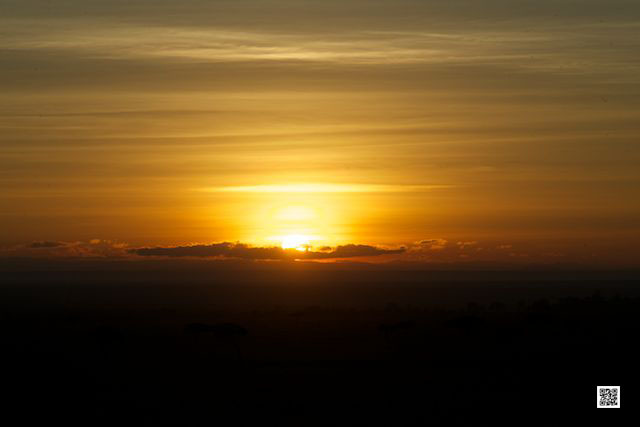
An image is endless. A photograph is a captured moment, yet a moment of infinity and so is the photo, infinite. No rewind, no replay button, its doing it all by itself.
With music one had to rewind and/or press replay to listen to the favorite song again, but not anymore. For those who cannot get enough of Gangnam Style or other persistently for replay asking hits Infinite Jukebox has arrived.
Read how it exactly works here and experience the infinity of a song, just like the infinity of a photograph.
Or are photographs a bit different infinite?
Ute Sonnenberg for www.rohoyachui.com

